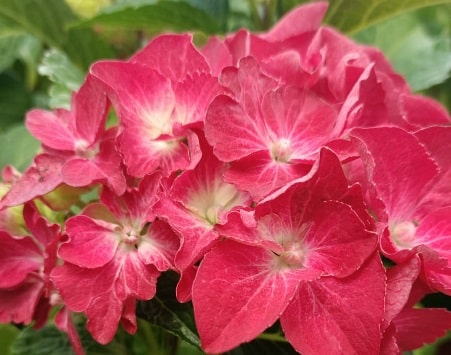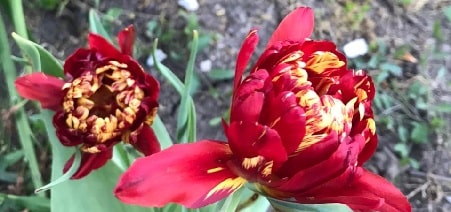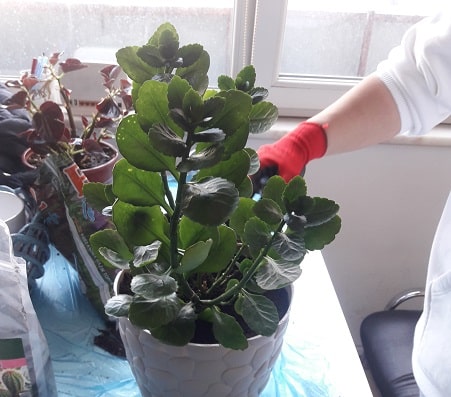Stoke-on-Trent, located in Staffordshire, England, has a diverse range of flowers that can be grown in the area. The specific varieties of flowers that thrive in Stoke-on-Trent will depend on the local climate, soil conditions, and personal gardening preferences. However, here are some common flower varieties that are well-suited for cultivation in Stoke-on-Trent:
- Roses (Rosa): Roses are a classic and popular choice in Stoke-on-Trent gardens. They come in various colors and types, including hybrid teas, floribundas, climbers, and shrub roses.
- Daffodils (Narcissus): Daffodils are spring-blooming flowers that add a burst of bright yellow or white color to gardens. They are resilient and thrive in Stoke-on-Trent’s climate.
- Tulips (Tulipa): Tulips are vibrant and versatile flowers that come in a wide range of colors and varieties. They bring beauty and charm to gardens in Stoke-on-Trent during the spring season.
- Pansies (Viola × wittrockiana): Pansies are cool-weather flowers that can be grown in Stoke-on-Trent gardens in the fall, winter, and early spring. They offer a variety of colors and have a distinctive “face” pattern on their petals.
- Geraniums (Pelargonium): Geraniums are popular bedding plants that are known for their long-lasting blooms and variety of colors. They are suitable for Stoke-on-Trent’s climate and can be grown in garden beds, containers, or hanging baskets.
- Marigolds (Tagetes): Marigolds are vibrant, easy-to-grow flowers that add a splash of color to gardens. They are available in different heights and come in shades of yellow, orange, and red.
- Lavender (Lavandula): Lavender is a fragrant flowering herb that thrives in Stoke-on-Trent’s climate. Its beautiful purple blooms and aromatic foliage make it a popular choice for gardens and borders.
- Dahlias (Dahlia): Dahlias are showy, summer-blooming flowers that come in various colors, shapes, and sizes. They add a bold and striking presence to Stoke-on-Trent gardens.

It’s important to consider the specific requirements of each flower variety, including sunlight, water, and soil preferences. Local garden centers, nurseries, or horticultural societies in Stoke-on-Trent can provide more information on flower varieties that are particularly well-suited for the area and can offer guidance on planting and care.
Endemic flowering plants growing in Stoke on Trent
Stoke-on-Trent, being a city in Staffordshire, England, does not have any endemic flowering plants specific to its locality. Endemic plants are those that are native and exclusive to a particular region or geographic area. As Stoke-on-Trent is not known for any unique or restricted habitats, there are no endemic flowering plants that are exclusive to this area.
However, Stoke-on-Trent and its surrounding areas do have a rich diversity of native and non-native flowering plants that thrive in the local climate and soil conditions. These plants contribute to the city’s natural beauty and can be found in various habitats such as gardens, parks, woodlands, and meadows.
Some common native flowering plants that grow in Stoke-on-Trent include:
- Bluebells (Hyacinthoides non-scripta)
- Wood Anemone (Anemone nemorosa)
- Cowslip (Primula veris)
- Foxglove (Digitalis purpurea)
- Common Poppy (Papaver rhoeas)
- Common Knapweed (Centaurea nigra)
- Meadow Cranesbill (Geranium pratense)
- Common Sorrel (Rumex acetosa)
- Common Yarrow (Achillea millefolium)
- Wood Forget-me-not (Myosotis sylvatica)
These native flowering plants, along with a wide range of non-native species, contribute to the floral diversity of Stoke-on-Trent. The city’s parks, gardens, and green spaces offer opportunities to explore and enjoy a variety of flowering plants throughout the seasons. What are the popular flower varieties grown in Stoke on Trent? >>
Which flowers are planted in which month in Stoke on Trent?
The planting of flowers in Stoke-on-Trent can vary depending on the specific flower varieties and the prevailing weather and climate conditions in a given year. However, here is a general guide for the planting of flowers in Stoke-on-Trent based on the months:

- March-April:
- Daffodils (Narcissus)
- Tulips (Tulipa)
- Primroses (Primula vulgaris)
- Pansies (Viola)
- Sweet Peas (Lathyrus odoratus)
- Wallflowers (Erysimum cheiri)
- May-June:
- Geraniums (Pelargonium)
- Marigolds (Tagetes)
- Petunias (Petunia)
- Lobelias (Lobelia erinus)
- Cosmos (Cosmos bipinnatus)
- Nasturtiums (Tropaeolum)
- July-August:
- Sunflowers (Helianthus annuus)
- Zinnias (Zinnia elegans)
- Dahlias (Dahlia)
- Gladiolus (Gladiolus)
- Salvia (Salvia)
- Alyssum (Lobularia maritima)
- September-October:
- Pansies (Viola)
- Sweet William (Dianthus barbatus)
- Poppies (Papaver)
- Calendula (Calendula officinalis)
- Snapdragons (Antirrhinum majus)
- Stocks (Matthiola)
Please note that these are general guidelines, and specific planting times may vary depending on weather conditions, frost dates, and the specific requirements of the flower varieties being planted. It is always recommended to refer to seed packets, plant labels, or consult with local nurseries or gardening experts in Stoke-on-Trent for more precise information regarding planting times and specific flower varieties suitable for the area. Flowers in Stoke on Trent >>
How to care for flowers in Stoke on Trent?
Caring for flowers in Stoke-on-Trent involves providing the appropriate conditions for their growth and ensuring they receive adequate water, sunlight, nutrients, and protection from pests and diseases. Here are some general care tips for flowers in Stoke-on-Trent:

- Watering: Water your flowers regularly, especially during dry periods. Aim to keep the soil consistently moist but not waterlogged. Adjust the frequency and amount of watering based on the specific needs of the flowers and the prevailing weather conditions.
- Soil Preparation: Ensure that the soil is well-drained, fertile, and rich in organic matter. Amend the soil with compost or well-rotted manure before planting to improve its structure and nutrient content.
- Mulching: Apply a layer of organic mulch around the base of your flowers to help retain moisture, suppress weed growth, and regulate soil temperature. Mulch can be organic materials like bark chips, straw, or compost.
- Fertilizing: Feed your flowers with a balanced, slow-release fertilizer or a water-soluble fertilizer formulated for flowering plants. Follow the instructions on the fertilizer packaging for application rates and frequency.
- Sunlight: Most flowers require adequate sunlight to thrive. Place your flowers in locations that receive the recommended amount of sunlight based on their specific requirements. Full sun typically refers to at least 6-8 hours of direct sunlight per day.
- Deadheading: Remove spent flowers regularly by deadheading them. This encourages continuous blooming and prevents the plant from diverting energy into producing seeds. Use clean pruners or pinch off the faded flowers just above a healthy set of leaves or a bud.
- Pest and Disease Control: Monitor your flowers for pests such as aphids, snails, and slugs. Use organic pest control methods or appropriate insecticides as needed. Be vigilant for signs of diseases like powdery mildew or fungal infections and take appropriate measures to prevent or treat them.
- Support and Pruning: Provide support for taller or climbing flowers such as stakes, trellises, or cages. Prune your flowers as needed to maintain their shape, remove dead or damaged branches, and promote better airflow within the plant.
- Winter Protection: In colder months, protect frost-sensitive flowers by mulching around the base and covering them with frost cloth or other protective materials during extreme cold spells.
Remember to consider the specific needs of each flower variety and follow any additional care instructions provided with the plants. Regular monitoring, proper care, and timely maintenance will help your flowers thrive in Stoke-on-Trent’s climate and ensure a beautiful display throughout the growing season.
